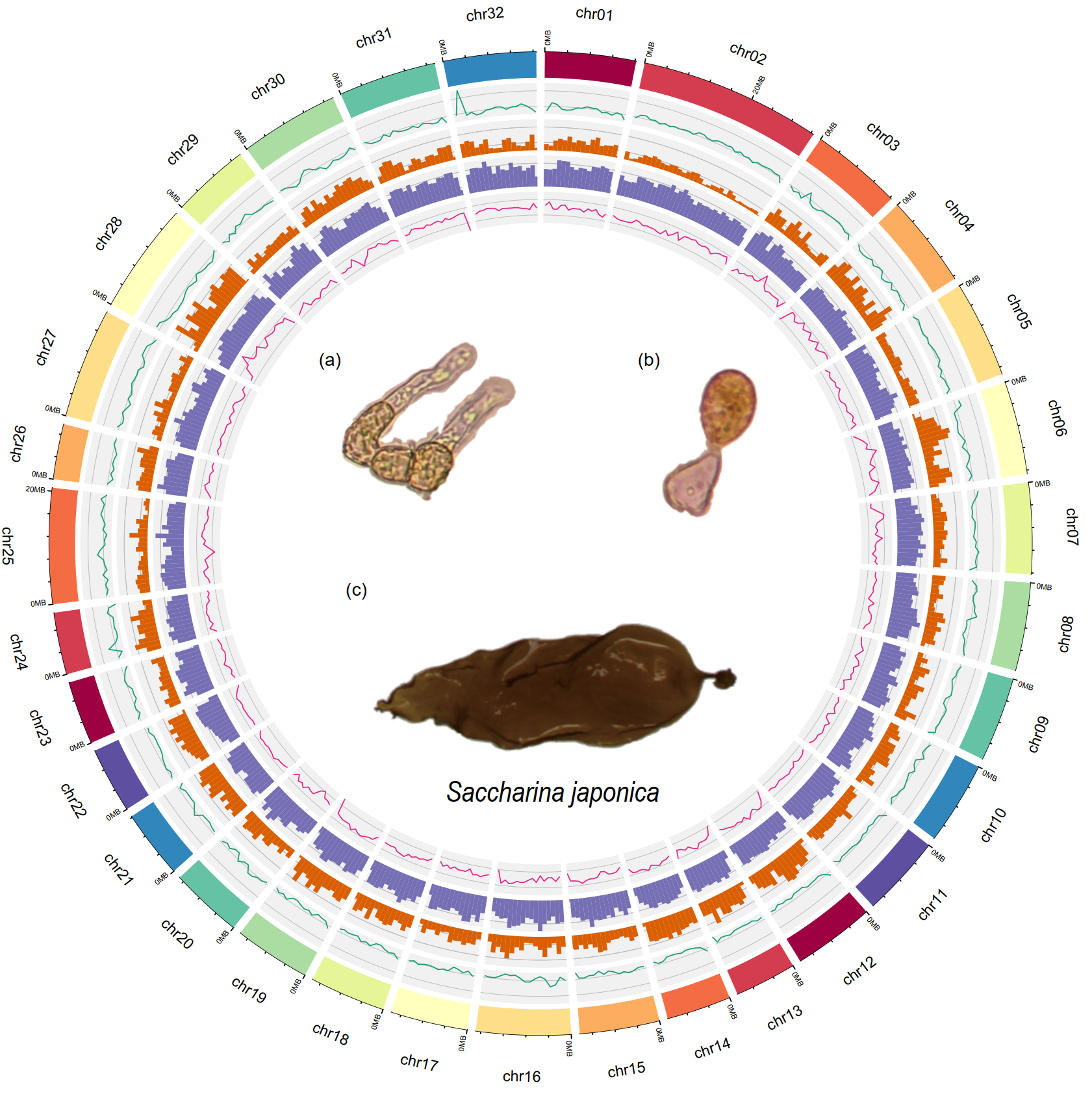Saccharina japonica is one of the most cultivated seaweeds globally, especially along China's coastline, where it has been successfully farmed in both cold-temperate and subtropical waters. While traditional selective breeding and hybridization have produced several high-quality varieties, the lack of a complete genome assembly has hindered further genetic advancements.
The challenge with sequencing kelp's genome lies in the extraction of DNA. As a seaweed rich in polysaccharides such as alginate, the process of DNA purification is notoriously difficult, impacting sequencing quality and assembly accuracy. Previous genome assemblies were highly fragmented due to technological limitations, restricting deeper molecular breeding and genomics research.
Recently, the research team led by Prof. PANG Shaojun from the Institute of Oceanology of the Chinese Academy of Sciences (IOCAS) has overcome these challenges by employing a novel approach to sample preparation. By using parthenogenetic techniques, the research team cultivated a homozygous diploid female sporophyte for genome sequencing. This innovation minimized heterogeneity, which significantly improved the accuracy and reliability of the genome assembly.
This study was publised in Scientific Data on February 18.
The researchers present a high-quality, chromosome-level genome assembly of S. japonica, using a combination of PacBio HiFi, Illumina short reads, and Hi-C data. The final genome size is 516.11 Mb, with 96.15% of the genome anchored to 32 chromosomes. This assembly is not only more complete but also demonstrates superior continuity compared to previous versions.
This breakthrough provides an essential resource for molecular breeding and genetic engineering in kelp, which can improve cultivation techniques and contribute to sustainable aquaculture practices. "With over 17,000 protein-coding genes identified and functional annotations available for the majority of them, our work paves the way for future ecological and evolutionary studies of brown algae," said Dr. LI Xiaodong, first author of the study.
Despite significant progress in breeding, the need for improved genomic resources remains critical for achieving the full potential of S. japonica. "Our high-quality chromosome-level assembly is an important step toward realizing these possibilities," said Prof. PANG, the corresponding author.

Fig. 1 Chromosome-level genome assembly of S. japonica. (A) Circos plot illustrating the chromosome structure, short-read depth, gene density, repetitive element density, and GC content. The visual highlights the genome's organization from the outermost to the innermost layers, with sections corresponding to the female gametophyte (a, b) and female sporophyte (c).
(Text by LI Xiaodong)
Media Contact:
ZHANG Yiyi
Institute of Oceanology
E-mail: zhangyiyi@qdio.ac.cn
(Editor: ZHANG Yiyi)

